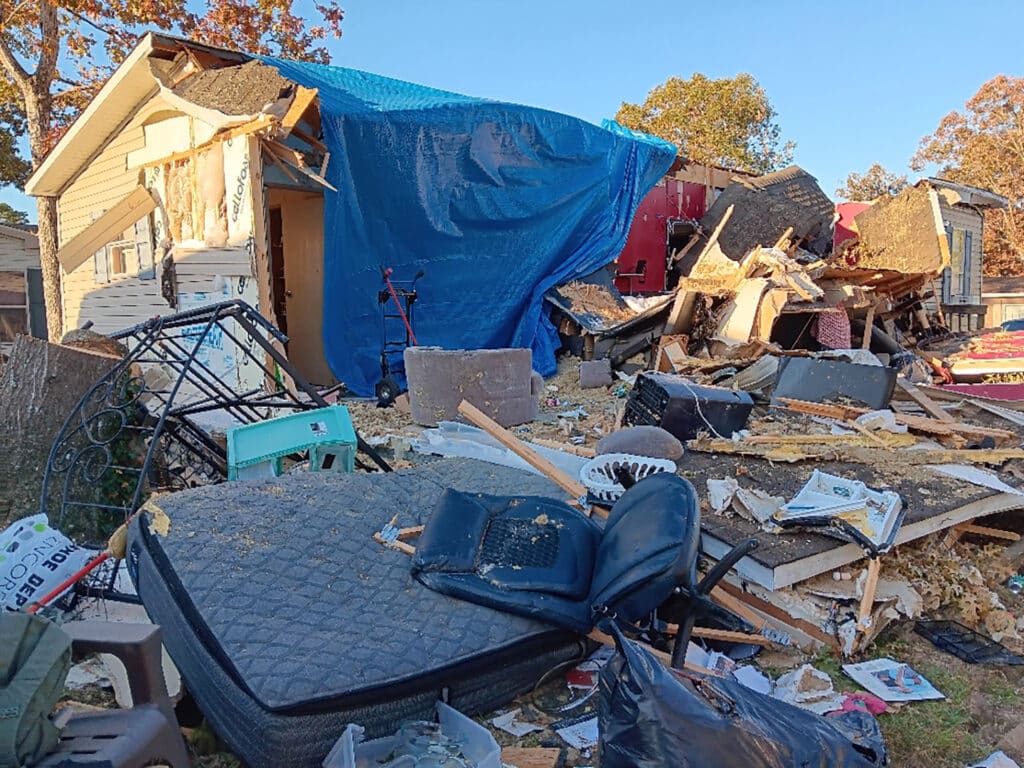It happened to me. Our family had a loved one pass away JUST as his state was asking all funerals to wait two months. We were faced with the choice of waiting it out to grieve our loss and celebrate a life … or plan a digital memorial. Think about it. Wait months on end to grieve, or try moving forward through a means often thought of as a cheap alternative. We chose a Zoom conference call. Guess what?
It was amazing.
Every family member found extraordinary value, from the youngest to the oldest. This was true for the technologically challenged to the video chat pros in our family. We laughed. We cried. We remembered. We celebrated. We joked. We sang. We watch a slide show. The gospel was shared. In many ways it was more focused and memorable than a live funeral. In fact, it is the first funeral I ever shed tears on and off through its entirety. I imagine one day when we get the opportunity we may do something face to face. Until then, we had a meaningful evening where it was obvious everyone got to move forward in life.
I suppose I loved the digital because timing matters. No one had to stuff it in or try to live suppressing a loss for an unreasonable amount of time. I will say it again: We were able to move forward and deal with grief.
So, here are a few insights I found that might be helpful:
- Choose a platform that is accessible to everyone. Our family used Zoom and loved it. More than half of our family had never used it before that day. Some of you may choose Skype or FaceTime for smaller groups. There are plenty of helps available (just search Google or YouTube) to help the family understand whatever platform is chosen. Most families will have at least one tech-savvy person who can help everyone else get set up for the service.
- Make sure the key family members are on board. This is an important step. The key family members usually are the spouse, adult children and sometimes a friend of the family. Make sure to consider any caretakers who may need to be involved. At first mention, the online memorial option may not seem right to some family members. In our COVID-19 climate, remind them the choice is not doing a live or digital funeral. It is a choice of how long they want to go before have a service in the grieving process. In short, the digital funeral is about personal health inside a reasonable time frame. In this instance, the digital platform can aid emotional and spiritual forward movement that may otherwise have to wait for months. Doing a digital memorial does not mean a family cannot meet in person with loved ones later on in the year. Once the key people are on board, encourage them to get the word out to anyone they see fit to include. An advantage of the online service is the cost of travel is no longer prohibitive to attend. That said, it might be more meaningful for a mid-sized group of 25 or less who can see each other without having to scroll through pages of people. This is something to discuss with the family.
- Plan a date 4-5 days in advance. You will want to give people time to understand and implement the technology needed to participate. During this waiting period, enlist key family members and friends who can help other participants with technology. In some instances, a family member may need to drive over and be on the same camera together with another struggling to understand or lacking the equipment. Bonus thought: The key element in choosing the day for an online service often becomes the time of day more than the day itself.
- Plan out your time. Use elements of pre, during and post funeral pastoral practices to create your in service plan. This means the time before a funeral, where pastors are typically asking questions and learning about the person can be done together during the service. Feel free to take advantage of all the normal live memorial elements on a digital platform. Plan to share a eulogy, sing, read, pray, play recorded songs, view slide shows, read poems and provide a sermon opportunity. For special memorials involving military you will find many quality videos of songs like Taps or videos of flag folding online. Whatever the choices are, plan it out. A final major advantage is the digital memorial allows for a broader use of people. Think outside of the box when it comes to enlisting people for service elements. Your church may not have a musician, but maybe another would lend you one to jump online and play for the service? The following points will provide extra details to consider for your service elements.
- Start out with ground rules. You will want to talk to everyone on screen about the need for kindness. Ask everyone to make this the best experience possible and save any difficult conversations for a face-to-face meeting or a phone call after the memorial is done. It would not hurt to give a short rundown of how to use whatever platform is chosen. Finally, it will be wise to set expectations of when it is acceptable to let young children leave the screen to expend their energy.
- Give plenty of space for people to share. This element holds the potential to be the most meaningful element of an online memorial. The modern world often creates distance between family and close friends. When they see everyone on screen together it will be moving in and of itself. It would be wise to ask one or two people to share ahead of time to get the ball rolling on conversation. It is possible that this element could take as much as 50-75 percent of your total time together online. Pastor, it is your job to facilitate this time together.
- Have someone sing to a track or play a song. This element was very profound and organic feeling on Zoom. It had a more personal tone to it than an in person memorial performance ever did. It just felt extraordinarily personal. For the most part, computer and phone microphones will pick up acoustic instruments and vocals well enough to do the job. If you cannot sing, simply holding your phone to play a song into the laptop you are on will do the job as well. On a final note, during live performances it is helpful to ask all other participants to mute their microphones. If you do not do this, the sound from each individual will not be in unison and could be distracting.
- Give a simple gospel presentation. There is not an adequate way to express just how powerful this time can be. Is there anything more concrete than the death of a loved one to cause consideration of one’s own eternity and relationship with the Lord Jesus? On a personal note, I was able to share the gospel with parts of our family I never thought possible. Everyone was gracious and gave me ample time to communicate from God’s Word. I simply offered my cell, email or the opportunity to pull me aside the next time we meet in person if they were convicted to respond. A shorter sermon seemed to be more effective in the context. I would recommend keeping it around 5 minutes in length. In our memorial, I closed the message by asking everyone to describe the one we lost with one encouraging word. I will never forget the one-word descriptions from some of my family members.
- Utilize screen share to provide a slide show. If you use a platform like Zoom, it is possible to load a picture slide show and have someone share the screen. During this time you can play a song over any computer or phone to have everyone enjoy the visual along with sound.
- Give prayer a place. This is where you as a pastor get a bonus opportunity. Prayer becomes far less formal in this context. You can pray as you would at any other memorial, but you may also take prayer requests and pray for the people in attendance. This is a special touch of pastoral care often unavailable at a normal memorial service.
- Think about recording it. It was very special that I was able to forward a link for the recorded memorial to our family just minutes after we were done. When recording in Zoom, it is best to choose the speaker mode rather than the gallery view and record to the cloud for faster sharing.
- Pastor, you will need to be more proactive in the planning. Different pastors serve in different contexts requiring varying amounts of effort. Some pastors are used to doing all the work of planning, while others only show up to give the message. In the case of a digital funeral, provide someone to give personal attention to the family to ensure the digital memorial will be a good experience. While it is great to delegate, more personal attention from a pastor will mitigate the lack of being present in person.
Whether from COVID-19 or every day life causes, you can be confident a well-planned digital memorial does the job. Admittedly, this method will not replace the warm embrace of a hug, but you will receive so much more than what you thought possible online and God will be glorified. Lord willing, there will be days ahead to see those you love in person. When those days return, you will have the fond memory of the time your family met online because it was the best you could do at that moment.
—Dave Carroll serves as the Worship and Student Discipleship Associate for the Southern Baptists of Texas Convention.














